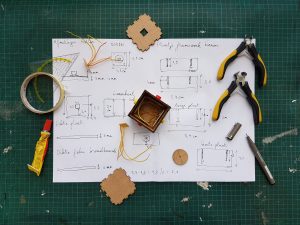TechInAfrica – Launching a new physical product is a real challenge. You probably know that there are many obstacles to bringing a new product to market, but what exactly are they? And more importantly, how to overcome them? This article is going to answer those questions and give you insights on how to deal with these problems.
Product development
The development of a physical product requires different engineering fields. This is particularly true for complex technological products. Most entrepreneurs do not have the necessary skills to develop a new physical product. And, in fact, it is extremely rare for a person to have all the necessary skills. Creating a new hardware product will probably require a small team of product developers.
Luckily, entrepreneurs of new products have a valuable resource that was not available before: freelancers. The freelance economy is huge and growing. You have at your disposal a whole world of experienced professionals.
Implementation of market feedback is slow
One of the biggest barriers to a product’s success is the implementation of target market feedback. With the software, you can easily release a simple version, collect comments and implement these comments in the next version.
It is impossible to know what consumers want to buy until you have something that you can actually sell them. But with a physical product, you have to spend a lot of resources developing and manufacturing it before you can get real feedback from the market.
The key to overcoming this obstacle is to sell the product before manufacturing it. There are two basic ways to accomplish this option. Notify the product on your website or launch a crowdfunding campaign. Both of these strategies will require you to have a large online audience, so start creating one now.
Prototyping
It is always preferable to start with the cheapest and simplest method to prototype a new product. You should gradually move towards a prototype that is almost identical to the final version, manufactured of your product.
In some cases, you may want to divide the functional and aesthetic aspects of the product into two distinct types of prototypes. The first type is the one that demonstrates the functional aspect of your product. This is called a factory prototype. The second type is called a prototype that looks like a prototype and demonstrates the appearance and shape factor of your product.
Eventually, you will merge the two prototypes into what is called a work-like prototype. This prototype level should be very close to your final production product.
Scaling up from prototype to manufacturing
Obtaining a fully functional prototype, resembling works of art, resembling similarities, is a huge achievement. But your product is still far from being ready for the market. Making a few prototypes is a world apart from producing thousands, even millions, of units ready for sale. Do not underestimate the time and cost of scaling up a prototype to mass production. In fact, this is a common reason why starts fail.
Fortunately, you do not need to create your own factory to manufacture your product. Instead, you can simply pay a contract manufacturer to produce your product. However, the cost of setting up manufacturing, even with a contract manufacturer, remains one of the main obstacles to bringing a new product to market. The way to get around this obstacle is to find a manufacturer who believes in your product enough to agree to amortize these costs.
Cash flow statement
Once manufacturing is underway, cash flow becomes the next serious obstacle. This is largely due to the delay between the time you pay your manufacturer and the time you are paid by your customers. Most manufacturers will ask you to pay them before shipping your product. However, most retailers will not pay you until 30 to 90 days after receiving your product.
So how do you finance your inventory during this period? Although not very common, some manufacturers are willing to offer you more favorable payment terms, especially if you have been working with them for a long time. Although 90-day payment terms are quite rare, try to negotiate better payment terms with your manufacturer. Any improvement will greatly help your cash flow.
While there are some barriers to bringing your new product to market, with a lot of work and determination, as well as product development, prototyping, market feedback and cash flow management, you will be able to overcome these minor challenges in a short period of time.
Source: Startupnation
 We just launched our WhatsApp channel. Want to get the latest news from the Tech in Africa?
We just launched our WhatsApp channel. Want to get the latest news from the Tech in Africa?




